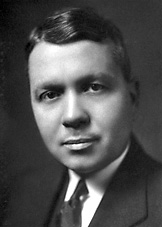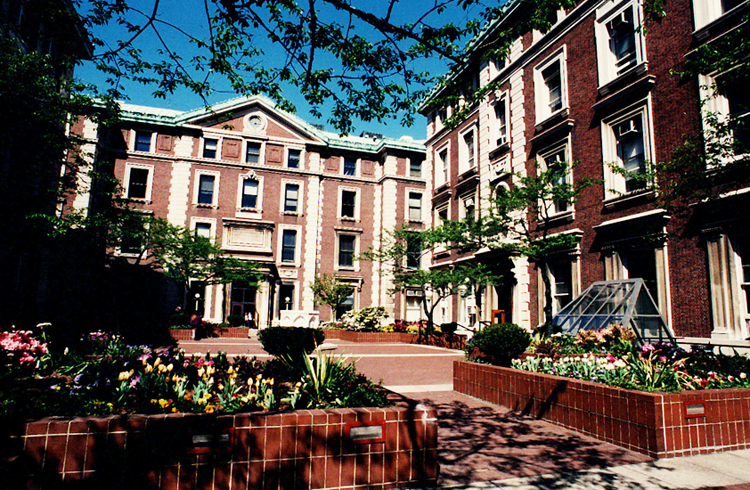Uranium Enrichment
During the first half of 1942, several routes to a bomb were explored. At Columbia University in New York, Harold Urey worked on the gaseous diffusion and centrifuge systems for isotope separation in the codenamed SAM (Substitute or Special Alloy Metals) Laboratory. At Berkeley, Ernest Lawrence continued his investigations on electromagnetic separation using the mass spectrograph he had converted from his thirty-seven inch cyclotron. Arthur Holly Compton patched together facilities at the University of Chicago’s Metallurgical Laboratory for pile experiments aimed at producing plutonium. Meanwhile, Edgar Murphree’s group hurriedly studied ways to move from laboratory experiments to full-scale production facilities.
Research on uranium required uranium ore, and obtaining sufficient supplies was the responsibility of Murphree and his group. Fortunately, enough ore was on hand to meet the projected need of 150 tons through mid-1944. Twelve hundred tons of high grade ore were stored on Staten Island, and Murphree made arrangements to obtain additional supplies from Canada and the Colorado Plateau – the only American source. Uranium in the form of hexafluoride was also needed as feed material for the centrifuge and the gaseous and thermal diffusion processes. Abelson, who had moved from the Carnegie Institute to the Naval Research Laboratory, was producing small quantities, and Murphree made arrangements with E. I. du Pont and the Harshaw Chemical Company of Cleveland to produce hexafluoride on a scale sufficient to keep the vital isotope separation research going.
Lawrence was so successful in producing enriched samples of uranium 235 electro-magnetically with his converted cyclotron that Bush sent a special progress report to Roosevelt on March 9, 1942. Bush told the President that Lawrence’s work might lead to a short cut to the bomb, especially in light of new calculations indicating that the critical mass required might well be smaller than previously predicted. Bush also emphasized that the efficiency of the weapon would probably be greater than earlier estimated and expressed more confidence that it could be detonated successfully. Bush thought that if matters were expedited a bomb was possible by as early as 1944. Two days later the President responded: “I think the whole thing should be pushed not only in regard to development, but also with due regard to time. This is very much of the essence.”
In the meantime, however, isotope separation studies at Columbia quickly confronted serious engineering difficulties. Not only were the specifications for the centrifuge demanding, but, depending on rotor size, it was estimated that it would require tens of thousands of centrifuges to produce enough uranium 235 to be of value. Gaseous diffusion also immediately ran into trouble. Fabrication of an effective barrier to separate the uranium isotopes seemed so difficult as to relegate gaseous diffusion to a lower priority (the barrier had to be a corrosion-resistant membrane containing millions of submicroscopic holes per square inch). Both separation methods demanded the design and construction of new technologies and required that parts, many of them never before produced, be finished to tolerances not previously imposed on American industry.
Plutonium Production
 In Chicago, Compton decided to combine all pile research by stages. Initially he funded Fermi’s pile at Columbia and the theoretical work of Eugene Wigner at Princeton and J. Robert Oppenheimer at Berkeley. He appointed Leo Szilard head of materials acquisition and arranged for Glenn Seaborg (the discoverer of plutonium) to relocate his plutonium work from Berkeley to the Met Lab in Chicago. In April of 1942, Compton secured space wherever he could find it, including a racket court under the west grandstand at Stagg Field, where Samuel K. Allison began building a prototype graphite and uranium pile. Although it was recognized that heavy water would provide a moderator superior to graphite, the only available supply was a small amount that the British had smuggled out of France. In a decision typical of the new climate of urgency, Compton decided to forge ahead with graphite, a decision made easier by Fermi’s increasingly satisfactory results at Columbia and Allison’s even better results in Chicago. In light of recent calculations that cast doubt on the MAUD report’s negative assessment of plutonium production, Compton hoped that Allison’s pile would provide plutonium that could be used as material for a weapon.
In Chicago, Compton decided to combine all pile research by stages. Initially he funded Fermi’s pile at Columbia and the theoretical work of Eugene Wigner at Princeton and J. Robert Oppenheimer at Berkeley. He appointed Leo Szilard head of materials acquisition and arranged for Glenn Seaborg (the discoverer of plutonium) to relocate his plutonium work from Berkeley to the Met Lab in Chicago. In April of 1942, Compton secured space wherever he could find it, including a racket court under the west grandstand at Stagg Field, where Samuel K. Allison began building a prototype graphite and uranium pile. Although it was recognized that heavy water would provide a moderator superior to graphite, the only available supply was a small amount that the British had smuggled out of France. In a decision typical of the new climate of urgency, Compton decided to forge ahead with graphite, a decision made easier by Fermi’s increasingly satisfactory results at Columbia and Allison’s even better results in Chicago. In light of recent calculations that cast doubt on the MAUD report’s negative assessment of plutonium production, Compton hoped that Allison’s pile would provide plutonium that could be used as material for a weapon.
By May 1942, Bush decided that production planning could wait no longer, and he instructed Conant to meet with the S-1 section leaders and make recommendations on all approaches to the bomb, regardless of cost. Analyzing the status of the four methods of isotope separation then under consideration – gaseous diffusion, centrifuge, electromagnetic, and pile (liquid thermal diffusion was added later) – the committee decided on May 23rd to recommend that ALL be pushed as fast as possible. This decision reflected the inability of the committee to distinguish a clear front-runner and its consequent unwillingness to abandon any method. With funds readily available and the outcome of the war conceivably hanging in the balance, the S-1 leadership recommended that all four methods proceed to the pilot stage and to full production planning.
The text for this page was taken from the U.S. Department of Energy’s official Manhattan Project history: F. G. Gosling, The Manhattan Project: Making the Atomic Bomb (DOE/MA-0001; Washington: History Division, Department of Energy, January 1999), 10-11.]





